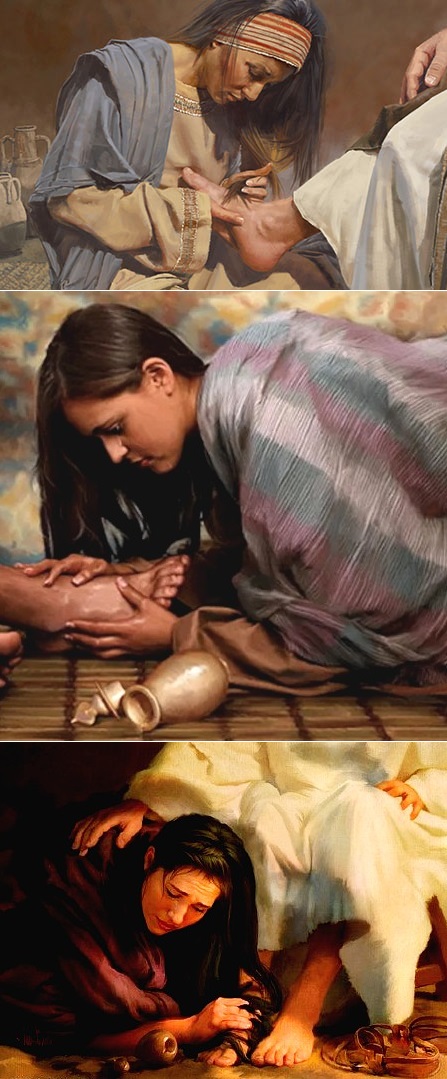The Mary Magdalene Medieval Legends fall into four broad categories, each consisting of various cross-pollinations and differences, the spectrum is highly complicated (despite the simple-minded nature presented in books such as The Holy Blood and the Holy Grail and The Da Vinci Code). As one scholar pointed out in 1982: “Like many saints at the centre of flourishing cults, Mary Magdalene had an infinitely divisible body and many resting places.”
Scholars are in general agreement that the Medieval legends of Mary Magdalene reflect a conflation of the three Marys as started by Pope Gregory the Great (Mary Magdalene, Mary of Bethany & the Penitent in Luke 7:36-50).
Broadly speaking, Mary Magdalene falls into these two categories:
The orthodox accounts found in the Gospels
The heretical accounts found in Gnostic Texts
Broadly speaking, the Medieval legends fall into these four categories:
-Palestinian Legend
-Ephesian Legend (Gregory of Tours, De Gloria Martyrum)
-Legend of the Sea-Borne Marys
-Provençal Legend
A list of some of the following main primary sources, that exist mainly in Latin or in French:
-Sermon attributed to St Odo of Cluny, c878-942 (Bibliotheca hagiographica latina 5439) (Acta Sanctorum (July V): 218). This text does not contain any reference to Mary Magdalene travelling to France, but it is cited as “the earliest text that assembles patristic motifs of her life into a single, concise and coherent narrative.” The sermon relates to the mythical early life of Mary Magdalene.
-Vita apostolica Mariae Magdalenae (Ancienne Vie de Marie Madeleine, anonymous)
-Vita eremitica (Bibliotheca hagiographica latina 5453-5456) (borrowed from the legend of St. Mary of Egypt)
-Vita apostolica and Vita apostolico-eremitica (Bibliotheca hagiographica latina 5443-5449)
-Vita evangelico-apostolica (Bibliotheca hagiographica latina 5450)
-Vita: Postquam Dominus N.I.C. (Bibliotheca hagiographica latina 5457)
-Vita: Fuit secundum (Bibliotheca hagiographica latina Supplement 5451b)
-Translationis narratio prior. (Bibliotheca hagiographica latina 5442, 5488)
-Baudric of Cambrai, Gesta episcoporum camaracensis
-Translationis narratio posterior. (Bibliotheca hagiographica latina 5489-5492)
-Vincent of Beauvais (c1184/1194-c1264), Speculum historiale, Book 9.
-Jacobus de Voragine (c1230-13/16 July 1298), Legenda aurea
-Petrus de Natalibus (died between 1400 and 1406), Catalogus sanctorum
-Sermon of Frater Peregrinus
-Sigebert of Gembloux (c1030-1112), Chronicon ab anno 381 ad 1113, Entry for AD 745
-MS. Lat. 89(1), [Vita Beatae Mariae Magdalenae et Sororis ejus Sanctae Marthae]: a manuscript containing a medieval life of Mary Magdalene attributed to Rabanus Maurus (these manuscripts date from the late 12th to the 15th centuries)
